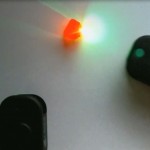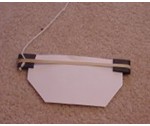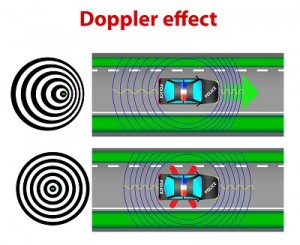It may seem like walking across a balance beam and listening to your favorite song are very different activities, but they both depend on your ears. Ears are the sense organs that control hearing, which is the ability to detect sound. Ears also sense the position of the body and help maintain balance when you walk a balance beam or ride a bike.
Imagine a pebble being dropped into a lake. Waves of water go off in all directions. A similar thing happens when a car driving down the street honks its own. Waves go off from the car in all direction. The difference is that these are not waves of water, but instead are sound waves, which travel through the air. If you are nearby, some of those sound waves make it to your ear.
Here’s a video that shows you how everything works together so you can hear:
The pinna, or outer ear, which is the part of your ear that you can see, gathers up some of the sound waves, sends them down the ear canal, and eventually they strike the eardrum. The eardrum is a thin membrane that vibrates like a drum when the waves hit it. The vibrations pass three tiny bones, called the hammer, anvil, and stirrup, as well as a membrane called the oval window, causing them all to vibrate.
From the oval window, the vibrations go to the cochlea, liquid-filled space lined with hairs. The vibrations make waves in the cochlea’s liquid, just like waves in a pond, causing the hairs to move. The movement of the hairs sends a nerve impulse through the auditory nerve to the brain. The brain interprets the message and “tells” you what you have heard.
This video is an old instructional film shown to pre-med students in the early 50s you might enjoy watching:
Along with hearing, the ears play a major role in balance. Inside the ears are semicircular canals which are lined with hairs and full of liquid. When the body moves in one direction, the liquid in the semicircular canals move, causing the hairs to move. This sends a message to your brain, which gives instructions for the body’s muscles to contract or relax. This keeps you balanced.
There’s a cool video of a camera going inside the ear… watch out for the wax!
Click here to go to next lesson on Big Ears.

 Gummy bears are a great way to bust one of the common misconceptions about light reflection. The misconception is this: most students think that color is a property of matter, for example if I place shiny red apple of a sheet of paper in the sun, you’ll see a red glow on the paper around the apple.
Gummy bears are a great way to bust one of the common misconceptions about light reflection. The misconception is this: most students think that color is a property of matter, for example if I place shiny red apple of a sheet of paper in the sun, you’ll see a red glow on the paper around the apple. Sound can change according to the speed at which it travels. Another word for sound speed is pitch. When the sound speed slows, the pitch lowers. With clarinet reeds, it’s high. Guitar strings can do both, as they are adjustable. If you look carefully, you can actually see the low pitch strings vibrate back and forth, but the high pitch strings move so quickly it’s hard to see. But you can detect the effects of both with your ears.
Sound can change according to the speed at which it travels. Another word for sound speed is pitch. When the sound speed slows, the pitch lowers. With clarinet reeds, it’s high. Guitar strings can do both, as they are adjustable. If you look carefully, you can actually see the low pitch strings vibrate back and forth, but the high pitch strings move so quickly it’s hard to see. But you can detect the effects of both with your ears. Sound is everywhere. It can travel through solids, liquids, and gases, but it does so at different speeds. It can rustle through trees at 770 MPH (miles per hour), echo through the ocean at 3,270 MPH, and resonate through solid rock at 8,600 MPH.
Sound is everywhere. It can travel through solids, liquids, and gases, but it does so at different speeds. It can rustle through trees at 770 MPH (miles per hour), echo through the ocean at 3,270 MPH, and resonate through solid rock at 8,600 MPH. When a guitarist plucks a string to start the vibration, it not only vibrates the string, but it also vibrates the entire box of the guitar. This is called a forced vibration, which means that the motion of the original source vibration is also causing another object to vibrate (the box of the guitar). Since the box is larger than the string, it amplifies the vibration and makes it louder.
When a guitarist plucks a string to start the vibration, it not only vibrates the string, but it also vibrates the entire box of the guitar. This is called a forced vibration, which means that the motion of the original source vibration is also causing another object to vibrate (the box of the guitar). Since the box is larger than the string, it amplifies the vibration and makes it louder. Imagine a police car on the side of the road with lights and sirens on full blast. You’re also parked and you hear the same frequency (say 1,000 Hertz) of the siren. However, if you’re driving at 75 mph toward the police car. you’re going to hear a higher frequency (1096 Hz), and if you’re driving away at 75 mph, you’re going to hear a lower frequency of 904 Hz. Why is that?
Imagine a police car on the side of the road with lights and sirens on full blast. You’re also parked and you hear the same frequency (say 1,000 Hertz) of the siren. However, if you’re driving at 75 mph toward the police car. you’re going to hear a higher frequency (1096 Hz), and if you’re driving away at 75 mph, you’re going to hear a lower frequency of 904 Hz. Why is that?